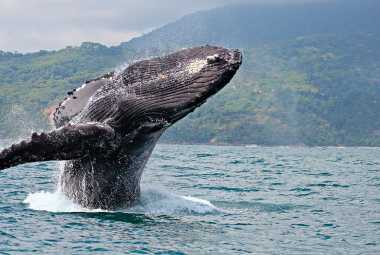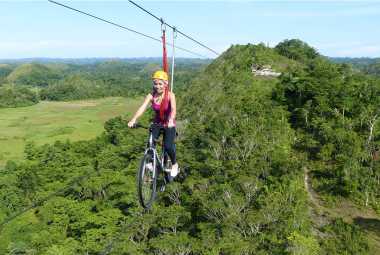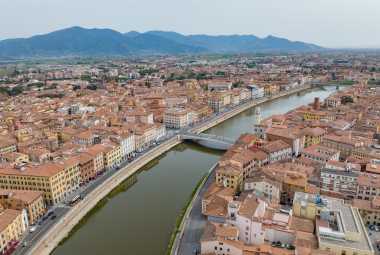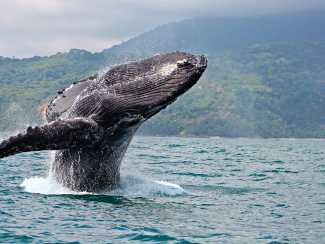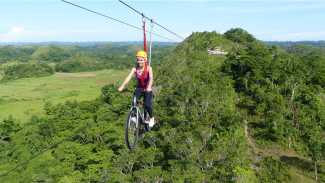Image by visitcostarica.com
*Vacation Mode is a for-profit site. It contains paid banner advertisements that are generated and managed by a third-party network. This site also includes relevant affiliate links (both in the content and on the sidebar) all of which we do our best to clearly mark as such.
Quick Summary
- Costa Rica has two main seasons: peak (dry) from December to April and off-peak (rainy) from May to November.
- The best time to visit is December to April, with January to April being the driest and warmest, ideal for outdoor activities.
- September to November, the low season, has the highest rainfall but offers great surfing conditions and lush landscapes.
- The dry season (December to April) features sunny days, perfect for beach vacations and exploring rainforests like Manuel Antonio National Park and Arenal Volcano National Park.
- The rainy season (May to November) has fewer crowds, greener landscapes, and afternoon showers, offering a different charm.
- Peak season sees tourists enjoying sunny beach days and water activities, while the off-peak season is ideal for surfers and those seeking tranquil nature walks.
- Monthly weather patterns vary, with mild temperatures in the Central Valley, dry conditions on the Pacific coast ideal for beachgoers from December to April, and consistent rainfall on the Caribbean coast, especially in September and October.
- Monthly highlights include:
- January: Ideal for visiting Arenal Volcano, Sarapiqui, and San José due to clear skies and lower humidity.
- February: Marks peak tourist season, especially in Guanacaste and Nicoya Peninsula for beaches and nightlife.
- March: Attracts beachgoers to Manuel Antonio for sunny days and water activities.
- April: Starts the rainy season, making it great for witnessing sea turtle nesting in Tortuguero National Park.
- May: Begins the 'green season,' transforming the Northern Zone into a verdant paradise.
- June: Ideal for surfers on the Pacific coast due to favorable wave conditions.
- July: Offers exceptional snorkeling and diving on the Caribbean coast.
- August: Perfect for eco-tourism enthusiasts in Sarapiqui for rainforest adventures.
- September: Showcases Costa Rica's agricultural heritage, especially in the Central Valley.
- October: Presents abundant wildlife sightings in places like Manuel Antonio.
- November: Marks the transition to the dry season, ideal for visiting Guanacaste for outdoor adventures.
- December: Features festive celebrations and cultural events, especially on the Nicoya Peninsula.
- Tips for different months include packing essentials like sunscreen, insect repellent, and light clothing, and embracing activities suited to the season, such as surfing, snorkeling, and participating in cultural festivals.
Planning a trip to Costa Rica but not sure when is the best time to visit?
In this article, we will explore the peak and off-peak seasons in Costa Rica, as well as the weather by month. From January to December, we will discuss the average temperatures and precipitation, along with the best activities to do in each month.
Whether you're a beach bum or a nature lover, we've got tips for traveling to Costa Rica in different months. Let's dive in and make the most of your Costa Rica adventure!
Key Takeaways:
- Costa Rica has two main seasons, peak and off-peak, with the best time to visit being December to April.
- January to April has the driest and warmest weather, making it ideal for outdoor activities like hiking and beach trips.
- September to November is considered the low season, with the highest chance of rain but also the best time for surfing and seeing lush green landscapes.
What is the Best Time to Visit Costa Rica?
Determining the best time to visit Costa Rica involves considering various factors such as weather patterns, peak tourist seasons, and preferred activities.
Costa Rica experiences two main seasons, the dry season (high season) and the rainy season (low season). The dry season typically runs from December to April, characterized by bright sunny days and little to no rain, making it perfect for beach vacations and exploring the lush rainforests.
During the dry season, popular destinations like Manuel Antonio National Park and Arenal Volcano National Park are bustling with tourists enjoying the ideal weather conditions and abundant outdoor activities.
On the other hand, the rainy season, from May to November, offers a different charm with fewer crowds, greener landscapes, and dramatic afternoon showers that provide a refreshing break from the heat.
What are the Peak and Off-Peak Seasons?
Costa Rica experiences two primary seasons: the dry season, known for sunny days and ideal beach conditions, and the rainy season, characterized by lush greenery and occasional showers.
During the dry season, beachgoers flock to renowned coastal destinations like Manuel Antonio and Tamarindo, where they can bask in the sun and enjoy crystal-clear waters for swimming and snorkeling.
On the other hand, surfers eagerly await the rainy season when the Pacific coast sees massive swells, making it a mecca for those seeking thrilling wave-riding experiences at spots like Playa Hermosa and Pavones.
For travelers wanting a more peaceful retreat, the rainy season offers a serene ambiance amidst the verdant landscapes of places like Monteverde Cloud Forest and Arenal Volcano, perfect for tranquil nature walks and rejuvenating spa retreats. In essence, Costa Rica's seasons cater to a diverse array of preferences, ensuring a memorable experience for every type of traveler."
Weather by Month in Costa Rica
Exploring the weather patterns in Costa Rica month by month offers insights into the diverse climatic conditions experienced across different regions like the Central Valley, Pacific coast, and Caribbean coast.
In the Central Valley, including San Jose, the weather remains relatively mild with temperatures ranging between 70-80°F all year round, making it a pleasant destination for those seeking a more temperate climate. On the Pacific coast, regions like Manuel Antonio and Jaco experience a dry season from December to April, perfect for beach enthusiasts. The rainy season from May to November brings lush green landscapes and ideal conditions for surfing in spots like Tamarindo.
The Caribbean coast, centered around Puerto Viejo, sees more consistent rainfall throughout the year, with a noticeable peak in September and October. This region offers a unique experience for nature lovers with its rich biodiversity and vibrant Afro-Caribbean culture. Whether you are exploring the Arenal Volcano or relaxing on the beaches of Guanacaste, understanding the local weather patterns can enhance your travel experience in Costa Rica.
January
January in Costa Rica marks the beginning of the dry season, making it an ideal time to explore attractions like the majestic Arenal Volcano, the lush Sarapiqui region, and the vibrant capital city of San José.
During this time, Costa Rica experiences clear skies and lower humidity levels, creating perfect conditions for outdoor adventures.
- Exploring the Arenal Volcano National Park allows visitors to witness the imposing volcano up close and enjoy activities like hiking, ziplining, and relaxing in natural hot springs.
- Sarapiqui's biodiversity attracts nature enthusiasts with its rich flora and fauna, offering opportunities for bird watching, wildlife spotting, and immersive eco-tours.
- In San José, immerse yourself in the local culture by visiting museums, colorful markets, and historic landmarks showcasing the country's heritage.
Remember to pack lightweight clothing, comfortable shoes, sunscreen, and insect repellent to fully enjoy your Costa Rica adventure!
February
February in Costa Rica ushers in peak tourist season, particularly in regions like Guanacaste and the stunning Nicoya Peninsula, known for their pristine beaches and vibrant nightlife.
Travelers flock to these coastal destinations to soak up the sun, enjoy thrilling water activities like surfing and snorkeling, and indulge in delectable seafood fresh from the ocean. The warm, tropical climate during this time creates the perfect setting for exploration and relaxation.
High season not only brings ideal weather conditions but also means a bustling atmosphere with various cultural events and lively festivals happening throughout the country. This surge in visitors adds to the vibrant energy of the already vibrant Costa Rican culture, making it an exciting time to experience the Pura Vida way of life.

March
March attracts beachgoers to Costa Rica, particularly the enchanting Manuel Antonio with its pristine beaches and lush rainforest, creating an idyllic setting for relaxation and exploration.
Visitors during this time are greeted by a delightful blend of sunny days and refreshing sea breezes, perfect for unwinding on sandy shores or trying exciting water activities.
- Exploring the rainforest canopy on thrilling zip line adventures or hiking through diverse ecosystems reveals the natural wonders of this biodiverse paradise.
- Beach enthusiasts can indulge in snorkeling in crystal-clear waters teeming with colorful marine life, or simply bask in the warmth of the tropical sun.
In addition, travelers can immerse themselves in the vibrant local culture, enjoying fresh seafood dishes and lively beachfront nightlife, making their Costa Rican journey truly unforgettable.
April
April signals the start of the rainy season in Costa Rica, attracting nature lovers to destinations like Tortuguero National Park for the mesmerizing sight of sea turtles nesting along the coastal shores.
During this time, the lush green landscapes of Costa Rica come alive as the rain revitalizes the flora and fauna, painting a picturesque scene for visitors. The sea turtle nesting rituals at Tortuguero National Park become a significant ecological event, drawing attention to the importance of conservation efforts in preserving these majestic creatures. As the rain showers become more frequent, the dense rainforests teem with life, offering opportunities for wildlife encounters that are truly unforgettable.
May
May heralds the 'green season' in Costa Rica, transforming the Northern Zone into a verdant paradise with its lush landscapes, diverse wildlife, and refreshing rain showers.
Travelers venturing into the Northern Zone during May will witness nature at its most resplendent, with the rainforests alive with vibrant hues of green, interspersed with colorful blooms and playful wildlife.
The eco-tourism opportunities in this period provide a unique chance to immerse oneself in the sanctuaries of conservation efforts, where hummingbirds flit among exotic orchids, and monkeys swing through the canopies.
The very air seems charged with the energy of renewal, as the land awakens from the dry season's slumber to embrace the nurturing touch of the rainy season. Each droplet that falls serves as a vital thread in the intricate tapestry of sustaining Costa Rica's unparalleled biodiversity.
June
June in Costa Rica beckons surfers and water sports enthusiasts to the Pacific coast, where favorable wave conditions and warm waters create an ideal setting for aquatic adventures.
Surrounded by stunning beaches and lush landscapes, this region provides a picturesque backdrop for those seeking thrills in the water. The Pacific coast of Costa Rica boasts world-class surfing spots that cater to all skill levels, from beginners to seasoned pros. Adventurers can ride the waves, soak up the sun, and immerse themselves in the vibrant coastal culture.
The warm waters of the Pacific offer a unique experience, teeming with diverse marine life waiting to be explored. Snorkeling and diving opportunities abound, allowing visitors to witness the beauty of colorful coral reefs and exotic fish species.
July
July invites travelers to the Caribbean coast of Costa Rica, renowned for its vibrant marine life, pristine beaches, and exceptional snorkeling and diving opportunities in the crystal-clear waters.
The tropical paradise of Costa Rica offers a plethora of underwater wonders waiting to be explored. Imagine immersing yourself in the dazzling beauty of colorful coral reefs teeming with an array of tropical fish species, sea turtles gracefully gliding through the ocean depths, and the chance to witness majestic whale sharks in their natural habitat.
Whether you are a seasoned diver or a beginner snorkeler, the magical underwater world off the Caribbean coast will captivate your senses and leave you in awe of the rich biodiversity that thrives beneath the surface.
August
August in Costa Rica is ideal for eco-tourism enthusiasts seeking rainforest adventures, with destinations like Sarapiqui offering immersive experiences in biodiversity, sustainable practices, and cultural encounters.
Exploring the lush rainforests of Sarapiqui allows visitors to delve into the heart of Costa Rica's natural wonders, where vibrant wildlife and cascading waterfalls create a tapestry of unparalleled beauty. The region exemplifies the principles of eco-tourism, with a focus on preserving delicate ecosystems and supporting local communities.
Engaging with indigenous cultures in the area provides a unique insight into the interconnectedness between people and the environment, showcasing the importance of conservation initiatives in maintaining the rich heritage of Costa Rica. By partaking in sustainable tourism practices, visitors contribute to the ongoing preservation efforts that safeguard the country's diverse landscapes for future generations.
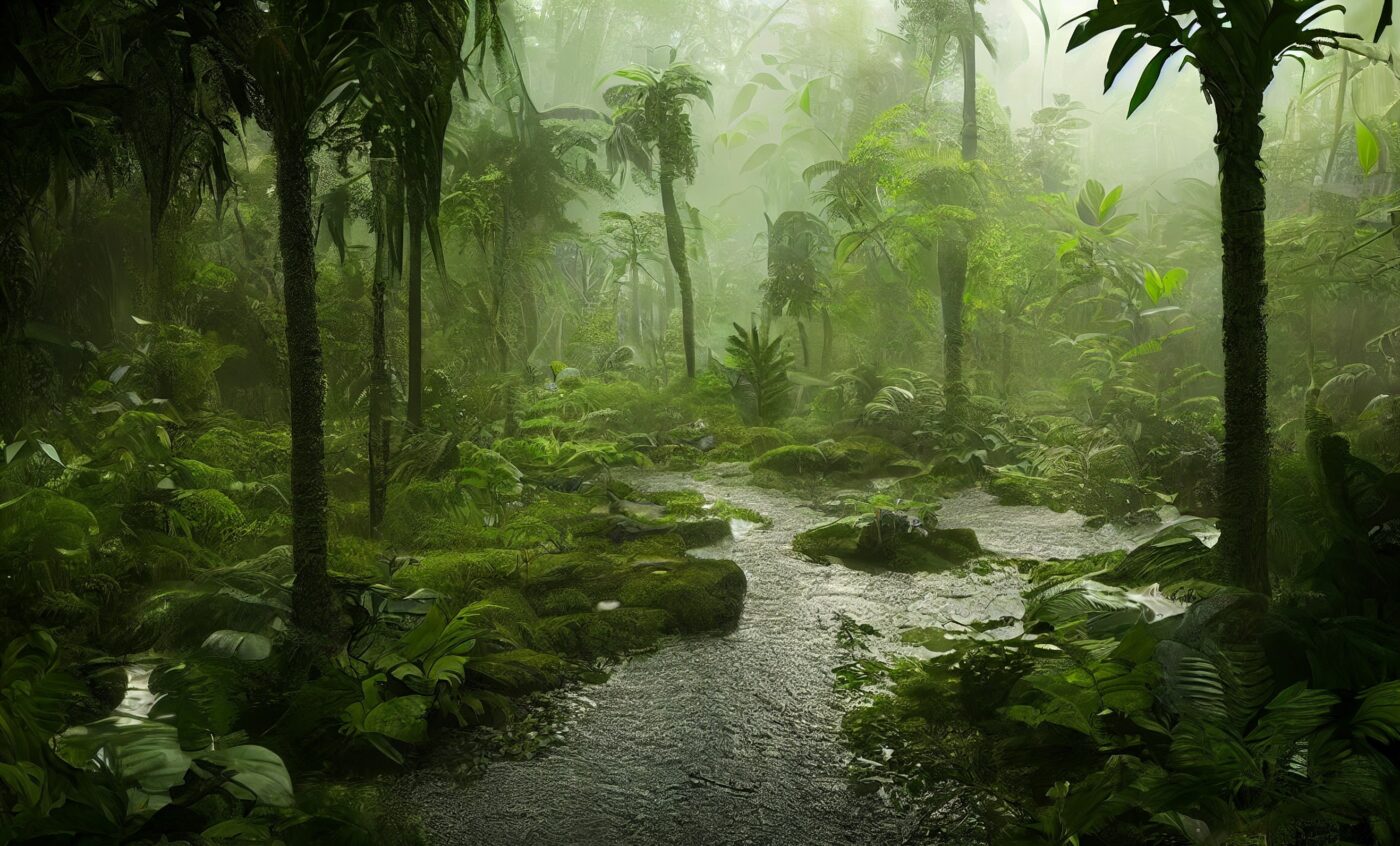
September
September offers a glimpse into the agricultural heritage of Costa Rica, particularly in the Central Valley, where lush landscapes, thriving coffee plantations, and cultural experiences beckon visitors seeking a deeper connection with nature and tradition.
Exploring the Central Valley during this time reveals the vibrant tapestry of sustainable agriculture practices intertwined with the region's history and cultural narratives. The coffee plantations stand as living testaments to Costa Rica's rich agricultural legacy, inviting guests to partake in coffee tours, where the aroma of freshly roasted beans fills the air.
Amidst the picturesque scenery, travelers can engage in hands-on experiences, such as participating in traditional harvest activities or learning about indigenous agricultural techniques that have sustained communities for generations.
October
October in Costa Rica presents abundant wildlife sightings and biodiversity hotspots, with destinations like Manuel Antonio offering unparalleled opportunities to witness diverse flora and fauna in their natural habitats.
During this time, the lush rainforests and pristine beaches of Manuel Antonio buzz with life, welcoming nature enthusiasts from around the globe. The richness of species here is astonishing, ranging from colorful toucans and playful monkeys to elusive jaguars and giant sea turtles.
Exploring the network of hiking trails in the national park allows visitors to immerse themselves in this spectacular biodiversity up close. The harmonious coexistence of various ecosystems in this region exemplifies Costa Rica's commitment to wildlife conservation and sustainable tourism.
November
November in Costa Rica marks the transition to the dry season, inviting travelers to regions like Guanacaste for outdoor adventures, sun-kissed beaches, and thrilling activities amidst the scenic landscapes.
The province of Guanacaste, known for its charming beaches, is a hotspot for water sports enthusiasts and nature lovers. The clear skies and warm temperatures provide an ideal setting for activities such as surfing, snorkeling, and zip-lining, all of which immerse visitors in the region's natural beauty and rich biodiversity. Coastal exploration along the stunning Pacific coastline unveils hidden coves, vibrant marine life, and picturesque sunsets that create unforgettable memories for those seeking adventure in this tropical paradise.
December
December in Costa Rica is a time of festive celebrations and holiday cheer, with the Nicoya Peninsula offering a picturesque backdrop for cultural events, beach parties, and memorable experiences to welcome the new year.
The locals are known for their joyful spirits during this festive season, which is reflected in the lively music, traditional dances, and colorful decorations that adorn the streets and squares. The vibrant atmosphere of the Nicoya Peninsula captivates both locals and tourists alike, creating a sense of unity and shared joy. From traditional posadas to beach bonfires, the array of seasonal events and traditions showcases the rich heritage and cultural diversity of Costa Rica.
What are the Average Temperatures and Precipitation in Each Month?
Understanding the average temperatures and precipitation levels in Costa Rica month by month provides valuable insights for planning activities, packing essentials, and making the most of your travel experience.
Costa Rica experiences a tropical climate with distinct wet and dry seasons. The rainy season typically spans from May to November, wherein the country receives the highest amounts of precipitation. Conversely, the dry season, running from December to April, offers sunny skies and lower chances of rainfall. During the wet season, lush greenery thrives, creating a vibrant backdrop for outdoor adventures. The average temperature hovers around 27°C (81°F) in coastal regions, making it ideal for beach activities and water sports.
What are the Best Activities to Do in Each Month?
Exploring the best activities to do in Costa Rica each month unveils a diverse array of attractions, adventures, and cultural experiences tailored to the unique weather conditions and seasonal highlights.
From January to March, adrenaline junkies can indulge in thrilling white-water rafting along the Pacuare River or zip-lining through lush rainforests. As April rolls in, nature lovers can witness the awe-inspiring sea turtle nesting season on Tortuguero's beaches. May to August beckons surf enthusiasts to ride the world-class waves of Tamarindo and Jaco. September marks the ideal time for bird-watching in Monteverde Cloud Forest, while October to December showcases vibrant cultural festivals like Dia de los Muertos and Christmas traditions.
Tips for Traveling to Costa Rica in Different Months
Planning a trip to Costa Rica involves considering specific travel tips tailored to the weather conditions and seasonal nuances of each month, ensuring a seamless and memorable experience throughout your journey.
When traveling to Costa Rica in January and February, you can expect dry and sunny weather on the Pacific coast, making it ideal for activities like surfing, snorkeling, and beach relaxation. The Caribbean side experiences more rain during these months. Packing essentials such as sunscreen, insect repellent, and light clothing are crucial.
March to April marks the dry season nationwide, offering the perfect time to explore lush rainforests and spot diverse wildlife. Whereas May to November brings the green season with refreshing showers that rejuvenate the landscape, providing great opportunities for rafting and waterfall excursions.
Frequently Asked Questions
What is the weather like in Costa Rica by month?
The weather in Costa Rica varies by month, with temperatures ranging from 70°F to 90°F and a mix of sunny and rainy days.
When is the best time to visit Costa Rica based on weather?
The best time to visit Costa Rica for optimal weather is between December and April, during the dry season.
How much rain can I expect during the rainy season in Costa Rica?
The amount of rain during the rainy season in Costa Rica varies by region, but on average it can range from 8 to 12 inches per month.
What are the temperatures like during the dry season in Costa Rica?
During the dry season in Costa Rica, temperatures are typically warm with highs in the 80s and lows in the 70s.
Is it possible to experience rain during the dry season in Costa Rica?
While the dry season in Costa Rica is generally rain-free, there is still a chance of some scattered showers, especially in the rainforest regions.
What should I pack for a trip to Costa Rica based on the weather by month?
It's important to pack light, breathable clothing for hot and humid temperatures, as well as a rain jacket or umbrella for potential rain during the rainy season. Don't forget to also pack sunscreen and bug spray for protection against the sun and insects.


